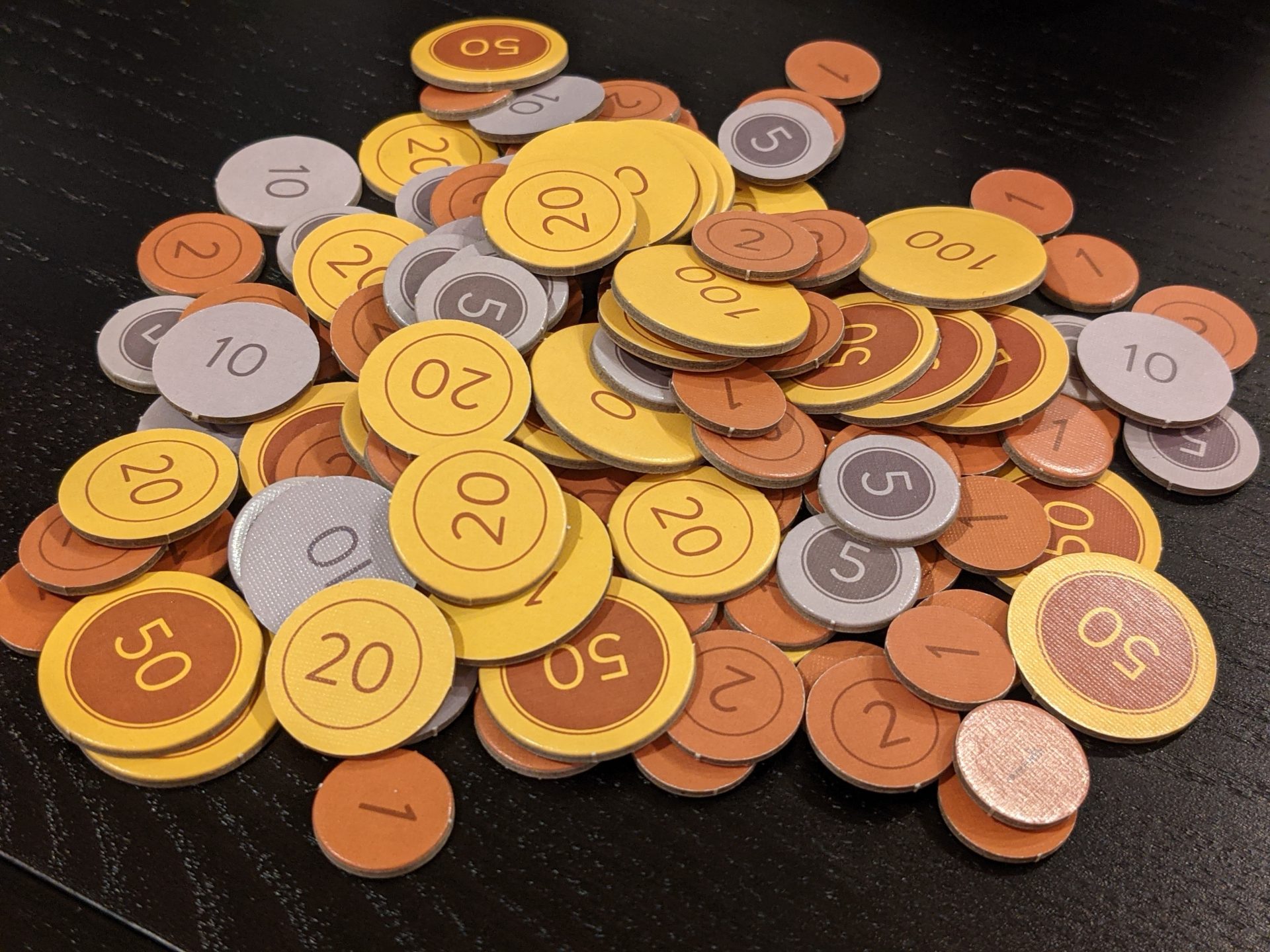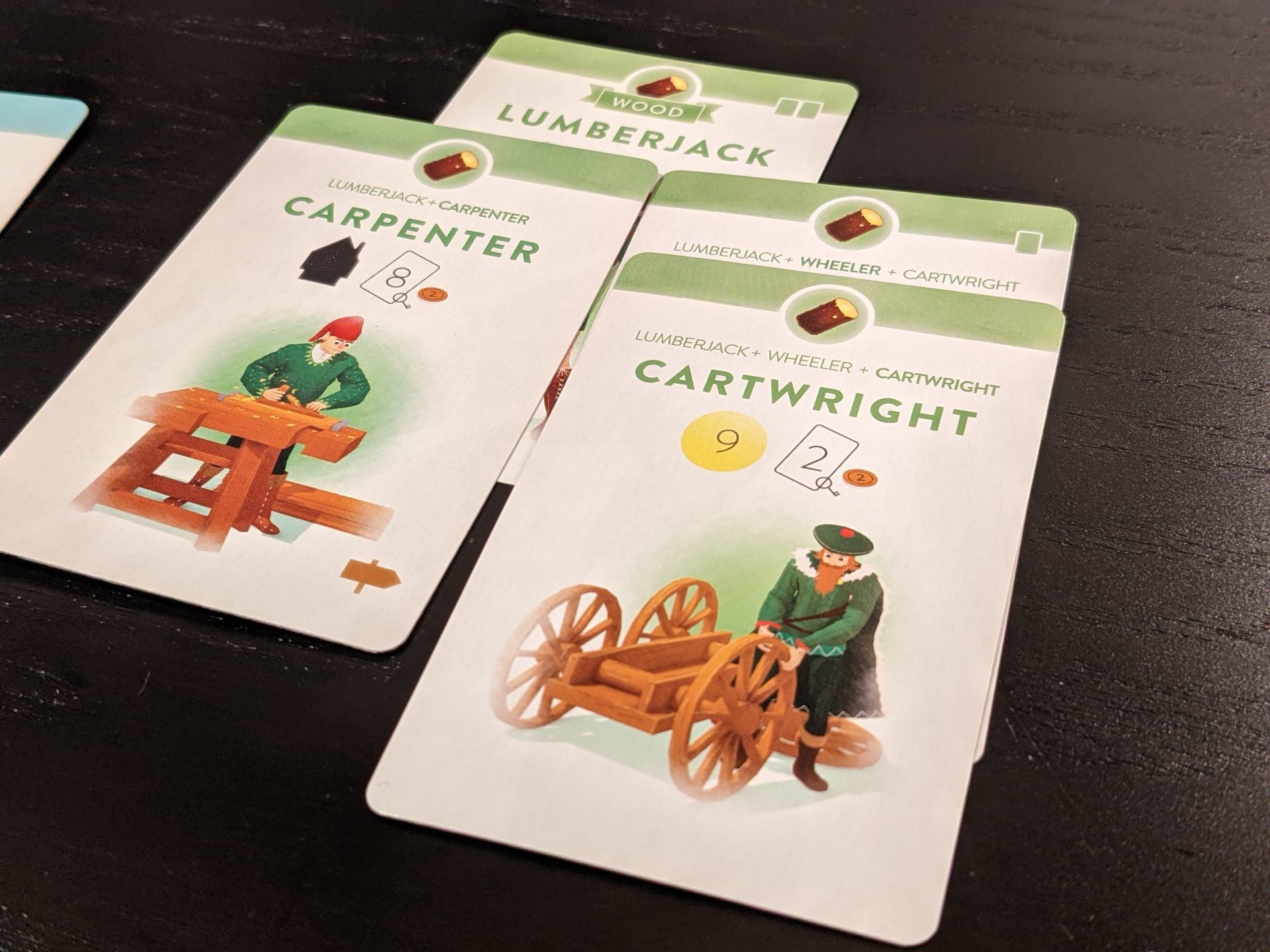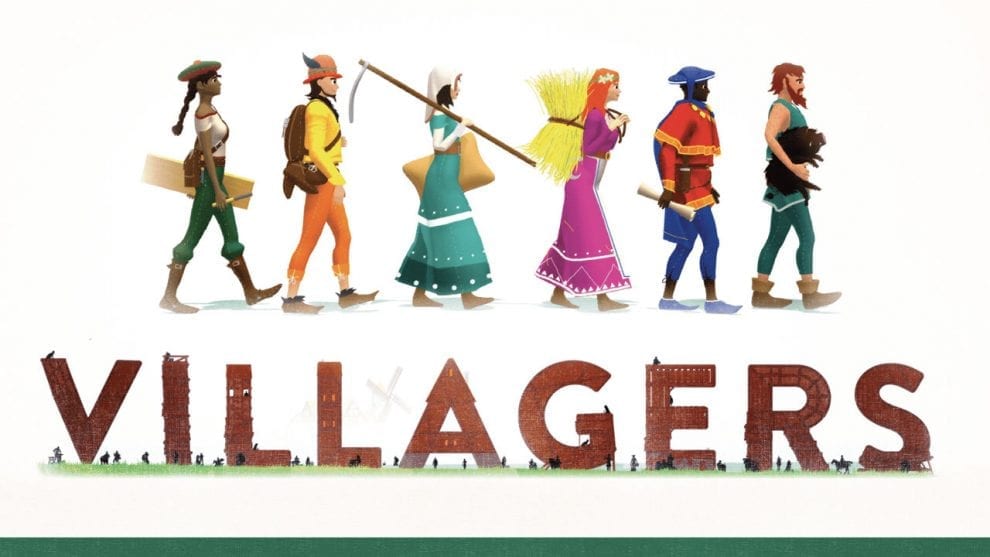Back in the olden times – all the way back in 2019, pre-COVID – I would occasionally visit a store here in Chicago to see what staff picks were recommended and new to my main gaming group.
One of the store’s employees really got jazzed talking about a new game called Villagers, published by Sinister Fish Games. I picked up the box, and while I couldn’t evaluate the game just by holding a small box of cards and components, the art style was striking and the characters on the box were drawn in a very inviting way. Also, as a man of color, any time the artist builds a diverse set of characters into a game, it is a breath of fresh air.
Then I learned that the incredible artist who designed all the card and box art is the same person who designed the game, Haakon Hoel Gaarder.
I paid for the game, then broke it out at a game night a few weeks later at my house…and everyone loved it. Two years later, friends continue to shower me with love whenever Villagers hits the table.
What makes Villagers so special? Read on to find out!

Hate drafting? Or rather, do you like to “spite draft?”
Villagers is a card drafting and tableau building game for 1-5 players, set in a Middle Ages-style era after a devastating plague. (I love it when games just assume you don’t care about the backstory, rather than painting a dry 1700s skin on a Euro. Personally, I think theme is overrated if the gameplay is excellent.)
Your goal over a series of rounds is to score the most points during two separate scoring phases: one which will take place about a third of the way through the game, with one more coming at the point when all available cards have been drafted by the players.
Each round of Villagers is split between a card drafting phase, where you’ll take between 2-5 cards into your hand, and a card build phase, where you can play a number of cards into your individual play area. The cards in Villagers are all people who are looking to work in each player’s portion of a central village, and all Villagers have a suit, essentially a job family listed on the card back – Ore, Hay, Wool, etc. Drafting the right cards to create scoring chains – or, “spite drafting” the right cards that your opponents may want, to ensure that they cannot achieve certain scoring chains – is the key to victory.
You’ll start a game of Villagers with a little bit of cash and five cards in your hand. All players have access to a market of six cards available face-up – the market is known as “The Road” in Villagers – and six columns of face-down cards which are used to refill The Road after each individual card below it is drafted. Each player takes a turn drafting one card that will sit in an area in front of you face up for the duration of each Draft Phase, giving other players a reminder of what you’ve drafted that round…and what you are likely building towards in the Build Phase.
Players must draft at least two cards every round, up to a max of five if you have increased your drafting limit by building cards with a food icon. Players may draft either one of the six face-up Road cards, or a face-down card from any of the six columns, each turn. (The face-down cards are only a minor risk – if you are trying to pursue an Ore strategy, for example, take a face-down Ore card since you at least know which suit that card represents!)
After all players have drafted up to their limit, a market clean-up phase takes place. You will need to discard any cards which already have a coin on top, then refill those slots with cards from a deck called The Reserve (all of the game’s currently out-of-play cards) and place a coin on each remaining card on The Road. This helps incentivize the table to take some of these cards in the next Draft Phase.
The heart of Villagers, and where all of your scoring opportunities reside, is the Build Phase. Using the same player order as the Draft Phase, players gather all of the cards they just drafted and add those to their respective hands. Each player may then build 0-5 cards from their hand into their play area, based on the number of cards you have previously built that have a Building icon, and personal choice, since it is occasionally best to hold onto your hand for a future turn.
Cards in Villagers have a fun anatomy that is very easy to understand, even during your first play. All cards which fall into a suit – Ore, Grapes, Wood, Leather, etc. – have to be played in production chains. This means there is a list of job types on each of those cards, which help indicate which job in the chain has to be played before you can play any other jobs in that same suit.
You can build cards in one of three ways:
- Simply play a card face-up into your play area. This can be done with Solitary cards (in essence, independent contractors who don’t belong to a job family) or with any production chain cards where you meet the suit’s pre-existing conditions for play. This will sometimes have a cost in coins to perform.
- Discard a card from your hand that you don’t want to or cannot build to take one Basic Villager card, in the families of Ore, Wood or Hay. This build action type is free and can be done up to three times per turn. This allows you to build the first Villager in a production chain of the deck’s three most populous card suits.
- Break the rules with Special cards – a suit of cards independent from the other suits – which often allow you to take a free action to create minor chaos in your play area, or that of another player!
Adding a nice element of strategy to how cards are played, some cards also require you to pay a specific named occupation/card type before being placed on the table. This is the “Padlock Mechanic” system in Villagers. For example, to build a Cooper into your village, you have to pay a Blacksmith two coins. If there is only one other Blacksmith on the table and you are the owner of that Blacksmith, you take two coins from the bank and add it to your Blacksmith card! If an opponent is the only one with a Blacksmith, you have to pay her two coins. If no one else currently has a Blacksmith in play, you just pay two coins to the bank.
Also, each Padlock card (like the Blacksmith) has a number in a keyring, which tells you how many other cards need to use that profession to be put into play. This is a great way to score lots of points if you can get these cards on the table before other players (and ideally be the only one in play, to ensure lots of coins will come your way).
Each player performs all possible build actions before passing to the next player. After all builds are completed, the round ends, the first player card marker is passed, and if the second or sixth column of cards on The Road was drafted, a scoring round takes place.
Scoring opportunities in Villagers are highlighted on any card that features either a gold coin symbol (scores in both scoring phases) or a silver coin (only scores during the end-game scoring phase). Also, any of your Padlock cards that have coins on them score that number of points. Finding chains that focus your scoring in certain suits, or that have large individual coin paydays, are vital to winning a game of Villagers. Also, some of the game’s suits are more rare; specializing in these might work out, but it’s hard to execute those strategies if other players see you are aiming for Grapes (or Wool, or Leather, the other rare suits in four or five player games).
The player with the most coins wins!

“You make my heart sing…”
Each time I play Villagers, I love it a little more. I’ve played it with three players and four players (still no five-player games yet, and the pandemic hasn’t helped matters!), as well as a couple of solo runs; it plays well and it plays fast at all player counts. Whether I play with gateway gamers or my more strategy-minded heavy gaming groups, everyone finds something to appreciate. Building production chains and watching your end-game scoring engine grow always brings a smile to my face!
For those more inclined towards friendly play, I notice that “spite drafting” during the Draft Phase does not happen as often. For game nights with friends who like to stab each other a little, the potential for spite drafting always leads to a good laugh, and you can always get around someone trying to mess with you (unless you were waiting for that 20-coin card at the end of a long production chain, and your “friend” just took it from you!).
Like all great games, Villagers really does have multiple paths to victory. In my most recent game, I saw a person stick only to building up one suit and then drafting all of the Solitary cards that gave him points for the total number of symbols in that suit. He also had a Carpenter card, to ensure that any time someone needed to pay a Carpenter, he was that guy!! Whether you specialize in one suit, or diversify and look for big coin payouts across multiple suits, a variety of strategies can work if you plan accordingly. Just be ready to pivot if you are competing with another player for a specific suit.
Villagers has a rich experience in the retail version that will give you plenty of interesting choices to make each time.

A brief note about solo play
During the pandemic, like many gamers I know, games such as Villagers gave me the excuse to try the built-in solo mode as a way to entertain myself, even if the game isn’t best at this format.
Sadly, the only major negative I would share about the overall Villagers experience: it doesn’t play very well solo, because it breaks maybe its most important base game rule: production chains.
In the solo variant of the game, you are playing against the Countess, the game’s AI which is driven by a deck of solo event cards. The events – which essentially break one or more rules each round – can sometimes be navigated because you are the one drafting cards to build into the tableau of the Countess, so you can always aim out of the way of certain cards that would really boost the Countess’s score in that round. Even if you can’t, it’s a fun challenge to work around these events, which get harder after the first scoring phase.
But in every round, the Countess is able to play ANY card into her tableau, including production chain cards that can net huge points without having to build the Basic Villager and any additional Villagers in those chains. So, the level three or four card in a chain that you had to wait to draft an exact card to build before playing a 20-point card? The Countess can build those for free.
And, the Special card suit in the base game of Villagers is not used in the solo variant, killing off chances to break the rules yourself with a clutch late-game play. It’s great that a solo version is included, but certainly do not make a buying decision based on only the solo variant.
Multiplayer is where it’s at!
Assuming you are playing Villagers with two or more players, you are in for a treat. Villagers is an excellent game that has mostly flown under the radar for the last 2+ years; I’m really looking forward to the next Sinister Fish game, Streets, which is also designed and drawn by Haakon Hoel Gaarder.
Villagers is the kind of gateway game every gamer should possess. Go out and grab this instant classic right now!











